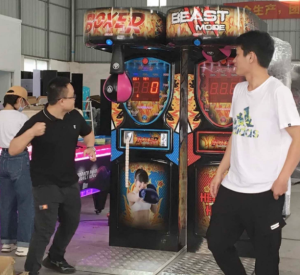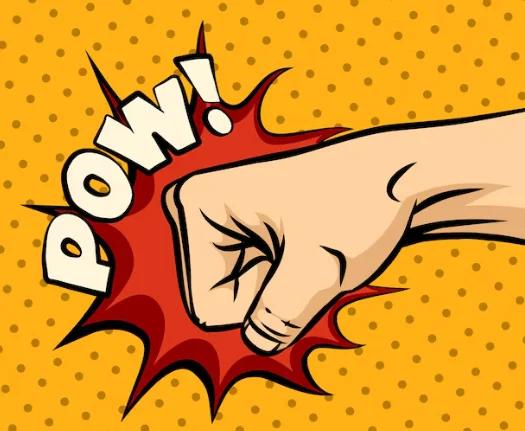To open a successful arcade, first, choose a location in a high-traffic area, such as a shopping mall or near entertainment venues, to ensure customer flow. Afterwards, select a wide variety of game machines, shooting, racing, and classic arcade games that are intended for all age groups in order to attract customers. Thirdly, an elaborate budget on equipment purchase and rent, employee salaries, marketing expenses, etc., should be prepared, and all the permissions relevant to business and safety features should be obtained. Finally, you need to design an organized layout to achieve optimal customer experience, and promote effectively through social media and offline events. Attract customers regularly and improve return visits.
Table of Contents
ToggleChoose a Location
This place forms the very reason for the arcade opening, since selection of the right place determines the numbers and type of prospect customers. Your revenue and profitability depend upon the numbers of people visiting your outlet. Prime locations tend to be in high-traffic areas like shopping malls, at the heart of any city or town, near universities, or other centers of entertainment. Such places will invariably promise healthy footfall along with brand exposure.
Besides, considering the aspect of foot traffic, you will also have to observe demographic composition and assess spending potential. As a rule, consumers in malls usually contain a lot of families and teenagers; that means it can be a perfect place if your target customers are casual players. If your arcade targets adult gamers and esports enthusiasts, you may consider a site in nightlife-heavy areas like bar streets or entertainment districts.
Estimate the number and types of competitors around a particular business location through thorough market analysis. This study of demographic data concerning age, gender, and income level of your potential customers, using Geographic Information Systems (GIS) or market analysis software, will help you to find the most commercially viable spot.
Pay attention to the lease terms. A high rent will increase operating risks, so it is advisable to negotiate with the landlord for free rents, discounts, or revenue-sharing agreements to lighten the financial pressure in the early stages. The general rule of thumb, according to the International Association of Amusement Parks and Attractions, states that arcade rent must not exceed 15%-20% of overall revenue.
Also, visibility is important. The arcade entrance should be very noticeable, and if possible, a great big attractive storefront sign would make it impossible for any people passing it to help but notice. For more exposure, use window displays with large attention-grabbing game machines such as racing simulators or virtual reality sets.
Pick the Games
Game equipment is the core asset of your arcade, and choosing the right type of game directly influences customer experience and consumption. A successful arcade should maintain a rich selection of many types of game machines to meet the needs of different customers: shooting, racing, music, action, and classic arcade games. Leon Amusement offers three popular games that give a great boost to your arcade:
-
Master Sniper Arcade Game: This shooting game is developed to help shooting enthusiasts feel the real sniping experience. It deploys advanced optical tracking technology and a high-precision gun control system. Simulate many real-world scenarios, such as urban, desert, and forest battlefields, to attract those customers who seek real experiences. The equipment has many levels and challenge modes for repeated customer consumption. The average daily coin drop in shooting games is 300-500 times, so it is a very profitable machine. Besides, maintenance is pretty cheap for Master Sniper because the design is durable and provides considerable reductions in long-term operation expenses.
-
Shooting Range Arcade Game: It’s a funny shooting game for families and groups. This game can be played by multiple players at the same time, and this raises the social quotient of the game. The automatic calibration system and dynamic targets make the game much more fun and challenging. Shooting Range Arcade Game is very popular for family and couple entertainment. As stated by Leon Amusement sales data, this game normally recoups within 12 months, which makes it a top choice for arcades.
-
Shooting Gallery Arcade Game: This classic shooting game is loved by players of all ages with its variety of targets and remarkable visual effect. Reward mechanisms and frequent updates of game content will keep the players interested and challenged. Such models attract casual customers for traffic in the arcade; they are also low-cost-operating and easy-to-manage machines.
Space utilization and energy consumption are the very factors to be considered when choosing game machines. Large-scale simulation machines, like racing games and VR games, will occupy more space and are better placed at the entrance to attract attention. Some small arcade games can be put in corners to maximize the use of space. Understand the life cycle and secondary market value of the equipment so you can make medium- and long-term investment planning without sustaining losses caused by asset depreciation.

Set a Budget
A realistic and very detailed budget is the core basis of any successful arcade operation. It needs to range from equipment purchases and rent right through to salaries of the staff and marketing efforts. Industry experience has demonstrated that an initial investment in a medium-sized arcade is estimated at between $100,000 and $500,000, depending on location and the number of machines.
1. Equipment Purchase Cost: Game machines are the most expensive. Generally speaking, high-end machines will have a price between $5,000 and $10,000 each unit, while VR and racing game machines are higher. If you are to have 20 units of machines, then the initial cost for equipment could go from $150,000 to $200,000. Moreover, do not be unaware that there may also be maintenance costs. Therefore, your overall equipment should have a budget for repairs and updates of about 10% every month.
2. Rent: Rent is definitely going to vary depending on location, but for the premier urban locations, rent could reach up to $10,000-20,000 per month, while in some less central locations, it may only reach $3,000-5,000. Of course, while negotiating the lease, drive a hard bargain for positive lease terms such as rent-free grace periods, which would be helpful to get the restaurant up and running, or for a rent structure that increases gradually over time. The rent should ideally be lower than 20% of the total revenue to ensure that financial stability is maintained.
3. Renovation Costs: Renovation costs include space layout, lighting design, soundproofing, and equipment installation. While all these will provide an attractive design, it is worth investing in to increase customer experience. It usually consumes 10%-15% of the entire budget, depending on the scale and complexity of the design.
4. Labor Costs: Other important costs include employee salaries, benefits, and training. Activities staff must perform include receiving at the front desk, maintaining game machines, serving customers, and cleaning. Generally, payroll should account for 20%-30% of total revenue, with each employee regularly trained to improve the quality of the services offered and raise customer satisfaction.
5. Marketing Expenses: There is a need for a marketing budget, mainly to attract customers, particularly in the opening period. It’s recommended to spend 10%-15% of revenue on promotional activities: social media ads, local community events, and grand opening promotions. Having a professional website and optimizing the ranking in search engines will drive more organic traffic, hence reducing the marketing costs in the long run.
Your financial budget should be flexible enough to bear any unexpected expenses and market volatility. With detailed cash flow analysis, you would be able to find out any financial risks early in advance and take necessary timely actions.
Get Permits
Before opening, you need to obtain all permits and licenses to operate legally. Laws vary with respect to arcades depending on the locality you are operating in. You are likely to need permits like any other entertainment facility permit, business permits, and fire safety clearance.
Contact the local municipal departments or business service centres to understand all the applicable laws and permit requirements. Some areas have further regulations, especially for shooting and simulation games, which may be required to give you technical specifications and safety certificates. There may also be regulations regarding minors: for instance, not being able to come in during certain hours of the day.
It is important for a joint to have complete documentation, including the floor plans, an inventory of the game machines present at a joint, and the working hours. In some regions, installations of surveys systems and certain health and safety standards are also required. For example, a fire department would need fire extinguishers as well as emergency exit signs for the safety of their customers.
The cost of licenses varies on location, but it will typically be from $1,000 to $5,000. It also takes several months to process, so plan ahead of time. Here, a lawyer or business consultant who knows your local laws can be quite helpful. He can ensure all procedures are legitimate and compliant so that you can avoid future legal issues.
Design the Space
The design of space is not oriented only to aesthetics; it has a direct influence on the flow of customers and the game experience. It could increase the frequency of replays, extending the time a customer will stay in that place. While designing, one should remember equipment layout, illumination, sound control, and routes of customer flow.
Place the high-attrition machines at the entrance or centrally for passing customers. Large-sized simulation games, car race, and shooting games are situated in an open area while the classic arcade may be situated in corners or corridors to fully utilize space. Not too many machines together, some space should be there where people can stand to play, move, and even change games.
Another important feature is the aspect of lighting design. Different areas can realize varied lighting styles; for instance, the shooting game zones can realize dimly lit to bring out tension, and music and dance game zones might use bright and colorful lighting to inject energy into customers. Not less important is the management of sound. Too much noise is a nuisance for customers; therefore, consideration should be placed on installing soundproof panels between machines to reduce noise.
Consider providing customer rest areas and waiting zones, introducing amenities like seating comfort and refreshment stations that will make customers stay a little longer. This will also improve the experience of family customers, especially those with children.
The overall design should be easy to maintain; durable materials and equipment should be used to reduce daily cleaning and maintenance. Use non-slip flooring, durable wall materials, and wear-resistant furniture to extend facility life and minimize repair costs.

Market Your Arcade
At least in the beginning, marketing is necessary to bring customers in. Today, social media is one of the best ways to accomplish this. Using sites like Facebook, Instagram, and TikTok, you can target an audience with much greater detail than you could previously. It goes without saying that high-quality content sharing, including game machine demo videos, customer reactions, and promotions during the grand opening time, can help raise brand awareness dramatically.
Use offline events other than online marketing, for example, the grand opening of events, game tournaments, or some community networking event. Events instantly lift brand awareness and attract the most loyal customer of yours. By offering prizes or some other type of reward in case of tournaments, more participation can be obtained and the place can be really enthusiastic.
Collaborative promotions are effective, too. Team up with local schools, businesses, or community groups to provide private events or group discounts; these will not only increase your sales but also broaden your client bases. You can also advertise on local radios and shopping malls for better brand awareness.
IAAPA industry research cites arcades that have returns on investment of 200-300% in early promotional efforts. Thus, be sure your initial marketing budget is well-funded but wisely allocated to the most impactful platforms and activities.
Don’t underestimate the power of word-of-mouth marketing. Encourage customers to share their experiences on social media, or provide small incentives for positive feedback and reviews. Good word-of-mouth will attract more customers and create a virtuous cycle.
Manage Operations
Therefore, effective day-to-day operations management should focus on several big spheres: equipment maintenance, customer service, analysis of data, and also staff management. Equipment maintenance is highly important because malfunction may affect customers’ experience negatively and even lead to losses. Develop a maintenance program, where each machine is at premium working conditions through periodic inspection and professional repairs.
Customer service is one of the core competitive advantages of an arcade. It is recommended that regular training be provided for its staff to enhance their service skills and responsiveness. The staff shall be able to handle whatever request or issue that customers raise on the spot, with each service better than the last one. Use of CRM would help manage customer preferences for personalization of service and hence customer loyalty.
Data analysis also enacts a powerful tool in making decisions. Apply the management software in tracking many metrics, including usage of machines, foot traffic daily, revenues of sales, and satisfaction of customers. Through analysis of those data, you will know which games are most popular and which marketing activities work best to optimize the placing of machines and marketing strategies. The key data from the industry shows that precise data analysis will raise overall revenue by 10%-15%.
Also, ensure that there is an effective level of inventory management concerning the drinks supply, prizes, and consumables on a daily basis. Arrange employees’ shifts and schedules in a manner to ensure that during peak hours, there will be minimal waiting time for customers. Have a monthly performance review to analyze what needs to be corrected and make adjustments in due time to develop efficiency.




